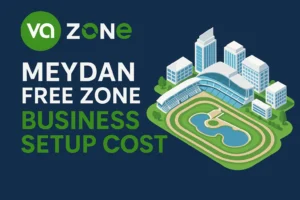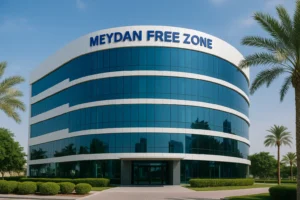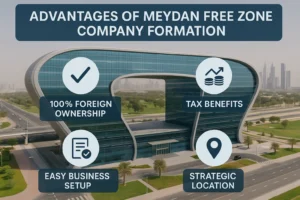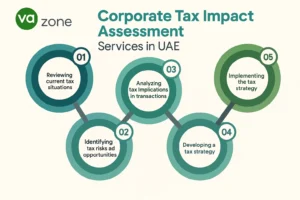
qualifying income under UAE corporate tax
Qualifying income under UAE Corporate Tax refers to income derived from specific business activities, such as foreign dividends, royalties, and income from free zone businesses. This income may be eligible for tax exemptions or preferential rates based on compliance with the UAE tax law.

Table of Contents
What is considered when qualifying income under UAE corporate tax?
What Does “Qualifying Income” Mean Under UAE Corporate Tax? Has it ever crossed your mind? Businesses operating in the free zones of the United Arab Emirates must comprehend qualified income for corporate tax. Companies can now operate under a taxation system that includes a 9% corporate tax rate on income over USD 102,110 (AED 375,000) thanks to the UAE Corporate Tax Law.
However, a beneficial 0% tax rate is applied to qualified income for qualified Free Zone Persons. Their non-qualifying income, on the other hand, is subject to standard rate taxation. The criteria that separate qualifying income from non-qualifying revenue, the ramifications for enterprises operating in the Free Zone, and the tactical factors to maximize tax efficiency under the new corporate tax regime will all be covered in this introduction.
How is Qualifying Income Defined?

The idea of “qualifying income” is crucial for companies, particularly those operating in free zones, in the framework of the United Arab Emirates (UAE) Corporate Tax Law (CTL), which went into effect on June 1, 2023. The principal company tax rate set by the CTL is 9% for income over USD 102,110 (AED 375,000). However, the qualifying income of Qualifying Free Zone Persons (QFZPs) is subject to a 0% tax rate. Non-qualifying revenue, on the other hand, is subject to a 9% tax.
How to Determine Qualifying Income Criteria

A number of requirements must be met to determine what constitutes qualified income for a QFZP. As long as it doesn’t originate from Excluded Activities, the revenue must originate from dealings with other Free Zone companies. Revenue from transactions with individuals who are not in the Free Zone may also be eligible, provided that it is associated with qualifying activities that are not excluded activities.
Manufacturing, processing materials or goods, owning shares and other securities, and a variety of services governed by UAE regulations are all examples of qualifying activities. Conversely, excluded activities cover a range of transactions, including (with some exclusions) those involving natural beings. Regulatory-monitored activities in the banking, insurance, finance, and leasing industries are likewise excluded. Excluded activities also include the ownership or use of real estate or intellectual property.
If your QFZP’s income satisfies certain minimum conditions, it may be eligible. These are satisfied when a QFZP’s non-qualifying revenue for a given tax period is less than USD 1.36 million (AED 5 million) or less than 5% of its total revenue for that time, whichever is lower. The entity will lose its position as a QFZP from the beginning of the relevant tax period and for the following four tax periods if these levels are surpassed or if the QFZP does not meet the eligibility requirements outlined in Article 18 of the CTL or other prescribed criteria.
Who is Considered a Beneficial Recipient?

Generating qualifying income is not enough for an entity to be considered a beneficial beneficiary; it must also meet other requirements. To carry out its primary revenue-generating operations, a QFZP must be in a Free Zone. It must have sufficient resources and hire personnel who are qualified for the work being done. Additionally, operating expenses that are appropriate for its business kind are anticipated.
Creating audited financial accounts in compliance with the CTL is another key requirement. These financial statements are crucial to demonstrate your adherence to tax laws. Additionally, they indicate that the income is eligible under the CTL.
It’s a good idea to thoroughly assess your financial arrangements and actions if you’re operating in a free zone. By doing this, you can be sure that you are adhering to UAE tax laws and that you are eligible for preferential tax treatment.
Criteria for Qualifying Income in Domestic and Foreign Permanent Establishments

For CT reasons, entities that have been formed or recognized by UAE law—including those located in Free Zones—are regarded as resident people. Because it establishes the extent of taxable income and related liabilities, this classification is essential.
Whether a foreign company is effectively managed and controlled in the United Arab Emirates determines whether it meets the requirements to be considered a resident for CT purposes. Therefore, if a company’s key managerial functions and decision-making take place in the UAE, it may still be governed by UAE CT even if it was not formed there.
When a non-resident entity establishes a permanent establishment (PE) in the United Arab Emirates, receives income from state sources, or has a relationship to the country through income from property situated there, they are subject to taxation in the UAE. Determining a non-resident entity’s tax liability requires knowing what a PE is. A PE is usually an established place of business where the non-resident carries out all or part of their business operations in the United Arab Emirates.
However, not every physical presence is considered PE. According to the CTL, places used just for auxiliary or preparatory purposes are not considered PEs. Because it exempts some small or supporting operations from CTL taxation, this distinction is significant.
The function of investment managers who represent non-resident individuals is also taken into account by the CTL. Investment management may not create a PE for the non-resident individual they represent since they are viewed as independent agents.
This is relevant to investment managers who deal with a variety of financial transactions, including those involving securities, derivatives, commodities, real estate, bonds, shares, and foreign exchange. This clause permits local investment managers to handle transactions on behalf of non-resident entities without establishing a taxable presence.
Additionally, family foundations, trusts, and comparable organizations are recognized by the CTL as distinct legal persons. These organizations usually have their own legal identity. They are put up to administer and safeguard the assets of people or families.
A family foundation may choose to be regarded as a transparent “unincorporated partnership” for CT purposes under specific circumstances. This option offers a tax-efficient approach to asset management, governance, and succession planning by excluding the foundation’s or trust’s revenue from being subject to taxation in the United Arab Emirates.
Qualifying Income from Immovable Property in a Free Zone

Understanding the characteristics of the property and the parties engaged in the transactions is necessary to determine the tax treatment for revenue produced from immovable property within a free zone. The source of the income determines the tax implications for commercial property.
The regular corporate tax rate applies to income from dealings with organizations outside the Free Zone. Nonetheless, profits from transactions made inside the Free Zone are tax-exempt, encouraging intra-Free Zone trade and advancing the UAE’s economic goals.
Tax duties for non-commercial property within Free Zones are made simpler by the uniform tax rate, which applies to all parties involved in the transaction.
The amount of Non-Qualifying Revenue that a QFZP can generate without losing its tax advantages is restricted by the de minimis rule. In particular, this revenue must be no less than USD 1.36 million (AED 5 million) or 5% of their total revenue. Funds from Excluded Activities and transactions with parties outside the Free Zone that don’t fit the requirements for Qualifying Activities are included in non-qualifying revenue.
With some limitations, total revenue includes all of the money a QFZP makes during a tax period before deductions. In particular, any transactions with non-commercially immovable property and revenue from transactions involving commercially immovable property with non-free zone individuals are not included. Furthermore, income from a QFZP Foreign Permanent Establishment or Domestic Permanent Establishment is not taken into account.
In order to keep the Free Zone’s economic incentives concentrated on preferred industries, the de minimis rule permits QFZPs to participate in a restricted range of non-qualifying activities while still enjoying their tax advantages. In order to maximize their tax position and adhere to the CTL, entities operating within a free zone need to keep an eye on their revenue sources.
What Are the De Minimis Standards?

The de minimis rules mainly determine a Free Zone Person’s (FZP) eligibility for tax benefits. The main focus of these requirements is the maximum amount of Non-Qualifying Revenue that an FZP may have in order to maintain its QFZP designation.
To make sure it doesn’t go over the designated threshold, a FZP needs to keep an eye on its non-qualifying revenue. The lower of USD 1.36 million (AED 5 million) or 5% of their total revenue during a tax period is this criterion. Funds from activities that are not in line with the primary operations that are encouraged by the tax incentives are considered non-qualifying revenue.
Excluded activities include transactions involving immovable property and regulated financial services. Total Revenue, on the other hand, is a QFZP’s total income before deductions, with some exclusions.
Qualifying revenue includes earnings from transactions within Free Zones, excluding those from Excluded Activities and from interactions with Non-Free Zone Persons that entail Qualifying Activities. Revenue associated with a PE, whether domestic or international, is not included in the Total Revenue computation.
An FZP will be reclassified and subject to standard rate taxation for at least five years if its Non-Qualifying Revenue exceeds the de minimis threshold. Furthermore, a QFZP’s mainland branch is usually treated as a domestic PE and is subject to the same taxes. In order for FZPs to maintain their qualifying status and take advantage of the tax benefits that support the UAE’s standing as an international business hub, these conditions are essential to the CTL.
What Constitutes Non-Qualifying Revenue in the UAE?
Funds from transactions that ordinarily would qualify for tax relief but do not while the other party is outside the FZ are also included in non-qualifying revenue.
A QFZP will lose its designation if its non-qualifying revenue surpasses the de minimis restrictions or if it fails to meet the eligibility requirements outlined in Article 18 of the CTL or other specified regulations. This reclassification takes effect at the start of the relevant tax term and lasts for four more periods.
The firm is not permitted to carry forward its tax losses or join a tax group during this time.
Additionally, an entity that no longer meets the requirements to be a QFZP is not eligible for certain tax reliefs, including business restructuring relief, as described in Articles 26 and 27 of the CTL and CT rollover relief, which relates to transfers within a qualified group.
The CTL’s transfer pricing requirements, which call for yearly financial statement audits, must also be met by entities in FZs.
Organizations should assess if their activities comply with the tax relief provisions of the CTL. This entails evaluating the type of transactions they make, the location of their business partners, and the classification of their activity. Additionally, they have to make sure that all administrative requirements related to QFZP status are met. It may be more advantageous in some circumstances to forego the FZ relief in order to benefit from other tax rules, such as tax grouping or transferring tax losses.
Understanding Compliance for Qualifying Income

For organizations operating under its authority, the UAE’s Corporate Tax Law offers both opportunities and problems in a constantly changing economic environment.
More than just good practices, keeping an eye on the type of money you make, making sure your activities are appropriately classified, and regularly checking your financial thresholds are necessary to preserve the economic benefits of being a QFZP.
Adapting to the UAE’s tax systems is crucial for both legal compliance and strategic company placement as the country firms its status as a central hub for international trade.
Remember that to navigate the CTL successfully, you must stay informed about any changes, consult a professional, and carefully match your business operations with the requirements. Businesses can only then take full advantage of the tax system in the United Arab Emirates.
FAQs: Qualifying Income under the UAE Corporate Tax
What is qualifying income under the UAE corporate tax?
Qualifying income is defined as income from particular business operations that satisfy the requirements set forth by the UAE Corporate Tax Law. These activities include income from intellectual property, certain investment types, and other operations that are exempt from taxes.
What types of income are considered qualifying income in the UAE?
Income from sources such as overseas dividends, royalties, real estate in free zones, and specific financial services is considered qualifying income as long as it complies with the UAE Corporate Tax Law.
How do I determine if my income qualifies under UAE corporate tax?
Your income must meet the requirements set down by the UAE tax authorities, such as being connected to specific activities or places like free zones, in order to be considered qualified. An expert’s advice can help guarantee compliance.
Are there any exemptions for qualifying income in the UAE?
Indeed, depending on the specific circumstances, some forms of qualifying income—such as income from foreign investments or qualifying intellectual property—may not be subject to taxation under the UAE Corporate Tax Law.
Does qualifying income include income from free zone businesses?
Yes, as long as it satisfies the standards for such operations, income from companies founded in designated free zones may be considered qualified income under UAE corporate tax.
Can I benefit from tax exemptions on qualifying income in the UAE?
In the UAE, qualifying income may qualify for tax exemptions or advantageous tax rates, primarily if it comes from suitable investment income or activities conducted in free zones.
What is the significance of qualifying income for UAE businesses?
Businesses must comprehend qualified revenue since it affects their tax obligations. Reduced or exempt tax rates may be advantageous for companies that generate qualifying income, potentially resulting in cost savings.
Does the UAE corporate tax affect income from foreign operations?
Yes, in particular possibilities—such as fulfilling the requirements for foreign qualifying income or being a part of a qualifying structure under UAE Corporate Tax Law—revenue from overseas operations may be eligible for tax exemptions.
Latest Posts


How to Open a Corporate Bank Account for Meydan Free Zone Company

Top 10 Best Business Ideas for Meydan Free Zone (2025)—Start Smart in Dubai

Meydan Free Zone Business Setup Cost (2025)—Affordable & Fast Setup Guide

Explore 5 Powerful License Types in Meydan Free Zone—Find the Best Fit for Your Business

Meydan Free Zone Company Setup Process (2025)—Step-by-Step Guide

Meydan Free Zone vs Other Free Zones in Dubai (2025) – Which One Is Best for You?

Top Benefits of Setting Up in Meydan Free Zone (2025)—Tax-Free & Strategic Location


Best Business Consultant Near Al Moosa Tower 1 Dubai—Expert Setup with VA Zone




Corporate Tax Return Filing in UAE Made Easy | Step-by-Step Guide 2025








Fujairah Free Zone & Company Formation in Fujairah Creative City

Sharjah Media City Free Zone – Get Your Trading License & Business Setup in SHAMS

